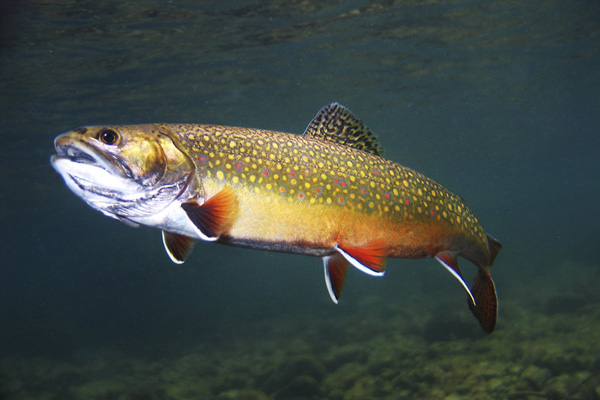Stream Restoration for New Jersey Native Trout
Protecting the Eastern Brook Trout, New Jersey’s only Native Trout Species
by Kelly Triece, Private Lands Biologist

Anyone already planning their fishing trip to their favorite stream this spring? Sunshine and cool refreshing streams will be here before you know it!
Streams and rivers are an essential part of our ecosystem, providing food, shelter and breeding grounds for hundreds of New Jersey native wildlife, as well as providing water for human use. These wildlife include, macro-invertebrates, reptiles, birds and fish such as the Eastern brook trout. The Eastern brook trout is valued for its beauty, sport-fish qualities and is an indicator of the health of our watershed. It is also the only native trout species in New Jersey, but is unfortunately threatened by urbanization and dense road networks which contribute to sedimentation, warmer waters and pollution.
This past year, CWF biologists along with our partner agency USDA’s Natural Resources Conservation Service (NRCS) have been working in conjunction with New Jersey Audubon Society to improve stream habitat throughout about 5,000 feet of the Musconetcong River. The Musconetcong River currently supports brown trout, and through restoration of the watershed it has the ability to support Eastern brook trout as well.
In order to restore the reach of the Musconetcong River, pool and riffle sequences were created and deep pools and point bars were established in the stream channel. These restoration techniques provide spawning habitat for trout, as well as benefit the organisms they depend on for food. Furthermore, the restoration of appropriate channel morphology helps to create a healthy riparian zone through the enhancement of flood plain connectivity.
CWF and USDA-NRCS continue to work with farmers and other landowners to plant stream-side shrubs and trees, fence livestock out of waterways, remove dams and use less pesticides in order to promote healthy watersheds. These practices will not only help prevent pollutants from reaching our waterways, but they will help maintain functioning ecosystems that will digest and filter pathogens and sediment. This collective effort by local land managers and landowners will enable us to protect human health, assure clean water and preserve our quality of life for generations to come.
Learn More:
- To learn more about our stream restoration work, contact Kelly Triece.
Kelly Triece is the Private Lands Biologist for Conserve Wildlife Foundation of New Jersey.